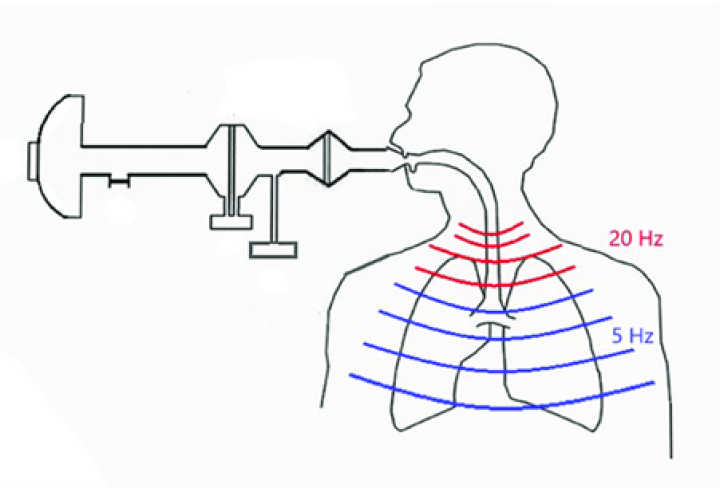The Impulse Oscillation Technique (IOS) is a relatively newer method used to assess lung function, especially in conditions like asthma and COPD. However, as with any medical test, there are several myths surrounding it. Let’s debunk some common myths and present the facts.
Myth 1: IOS is only for diagnosing asthma.
Fact: While IOS is commonly used for assessing asthma, it’s not limited to just that. IOS can also be used to assess lung function in other conditions such as Chronic Obstructive Pulmonary Disease (COPD), pulmonary fibrosis, and other respiratory disorders. It measures the resistance and reactance of the lungs, providing valuable insights into the state of the airway, no matter the condition.
Myth 2: IOS test is painful and uncomfortable.
Fact: The IOS test is completely non-invasive and pain-free. During the test, patients are asked to breathe normally into a mouthpiece connected to the device. Unlike other lung function tests, there is no need for deep inhalation or exhalation, which makes the process comfortable for most people, including children and the elderly.
Myth 3: IOS test is only used for acute respiratory issues.
Fact: IOS is not just for assessing immediate symptoms or flare-ups. It is also useful for long-term monitoring of respiratory conditions. Regular testing using IOS can help doctors track changes in lung function over time, allowing for better management of chronic conditions such as asthma or COPD.
Myth 4: IOS is not as accurate as spirometry.
Fact: While spirometry is a widely known test for lung function, IOS provides complementary information. Spirometry measures the amount of air a person can breathe in and out, while IOS assesses how air moves through the small airways of the lungs. In some cases, IOS can detect airway obstruction before spirometry can. It can also be useful when spirometry results are difficult to interpret, such as in patients with small airway disease or in children.
Myth 5: Only experienced clinicians can interpret IOS results.
Fact: While it is true that trained professionals are needed to conduct and supervise the test, interpreting IOS results doesn’t require highly specialized expertise. The results from an IOS test are often presented in a straightforward manner, providing clear markers of airway resistance and reactance. This can help physicians better understand the patient’s condition, regardless of their prior experience with IOS.
Myth 6: IOS test is not reliable for patients with COPD.
Fact: IOS is a reliable and effective tool for assessing lung function in patients with COPD. It provides insight into the small airways of the lungs, which are often the most affected in COPD. In fact, IOS can be particularly useful in assessing changes in airway resistance and monitoring the effectiveness of treatment in COPD patients.
Myth 7: IOS is a replacement for all other lung tests.
Fact: IOS is not a replacement for traditional lung function tests like spirometry. Instead, it is a complementary tool. Doctors use a combination of tests, including spirometry, chest X-rays, and blood tests, along with IOS, to get a comprehensive picture of lung health. The test is part of a larger diagnostic toolbox, not the sole solution.
Myth 8: IOS is only for adults with respiratory symptoms.
Fact: IOS is not limited to adults. It is a useful tool for testing lung function in children, especially for those who might have difficulty performing other lung tests, such as spirometry. It can be particularly helpful in assessing asthma in young children, where traditional tests might not give accurate or reliable results.
Myth 9: IOS can diagnose all respiratory conditions.
Fact: While IOS is an excellent tool for assessing lung function, it is not capable of diagnosing every respiratory condition on its own. It provides key data on airway resistance and reactance but is part of a broader diagnostic approach. Doctors will typically use IOS results in combination with other tests and clinical evaluations to make a final diagnosis.
Myth 10: IOS is not beneficial for long-term monitoring.
Fact: IOS is incredibly valuable for long-term monitoring of chronic respiratory conditions. Since it provides data on both large and small airways, it helps track subtle changes over time that might not be detected by other tests. This is particularly important for managing conditions like asthma and COPD, where the aim is to prevent flare-ups and optimize treatment.
Conclusion
The Impulse Oscillation Technique (IOS) is a cutting-edge, non-invasive tool for assessing lung function that can provide valuable insights into respiratory health. By dispelling common myths and understanding the true capabilities of the test, patients and healthcare professionals can make better decisions about using IOS for diagnosis and monitoring.
If you’re considering an IOS test or have more questions about your lung health, don’t hesitate to consult with a healthcare provider. Understanding the facts and clearing up misconceptions is key to making informed decisions for your respiratory well-being.
Want to know more about the Impulse Oscillation Technique (IOS) and how it can benefit your lung health? Book a consultation today with our expert pulmonologists and take the first step toward better respiratory care.



